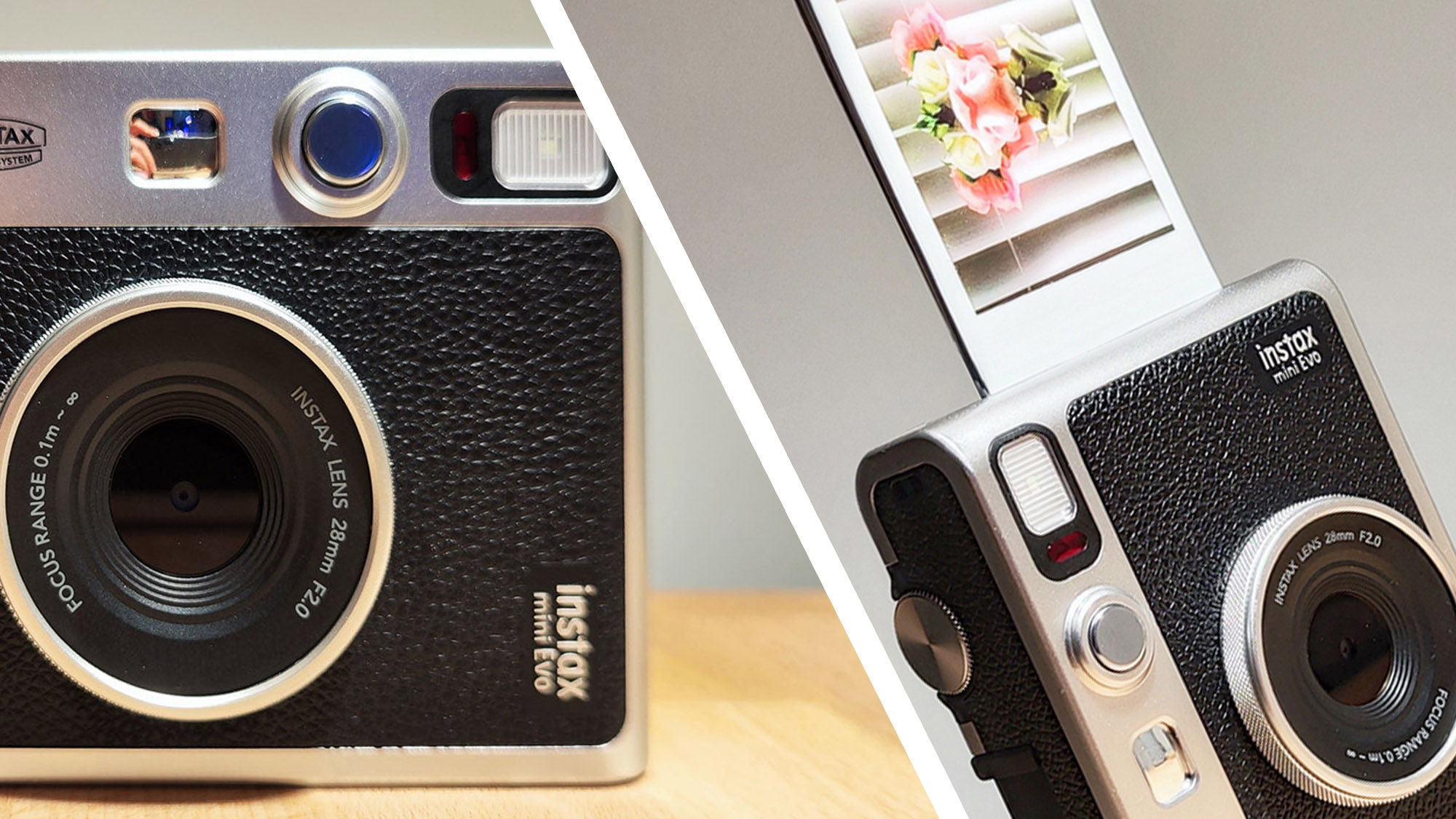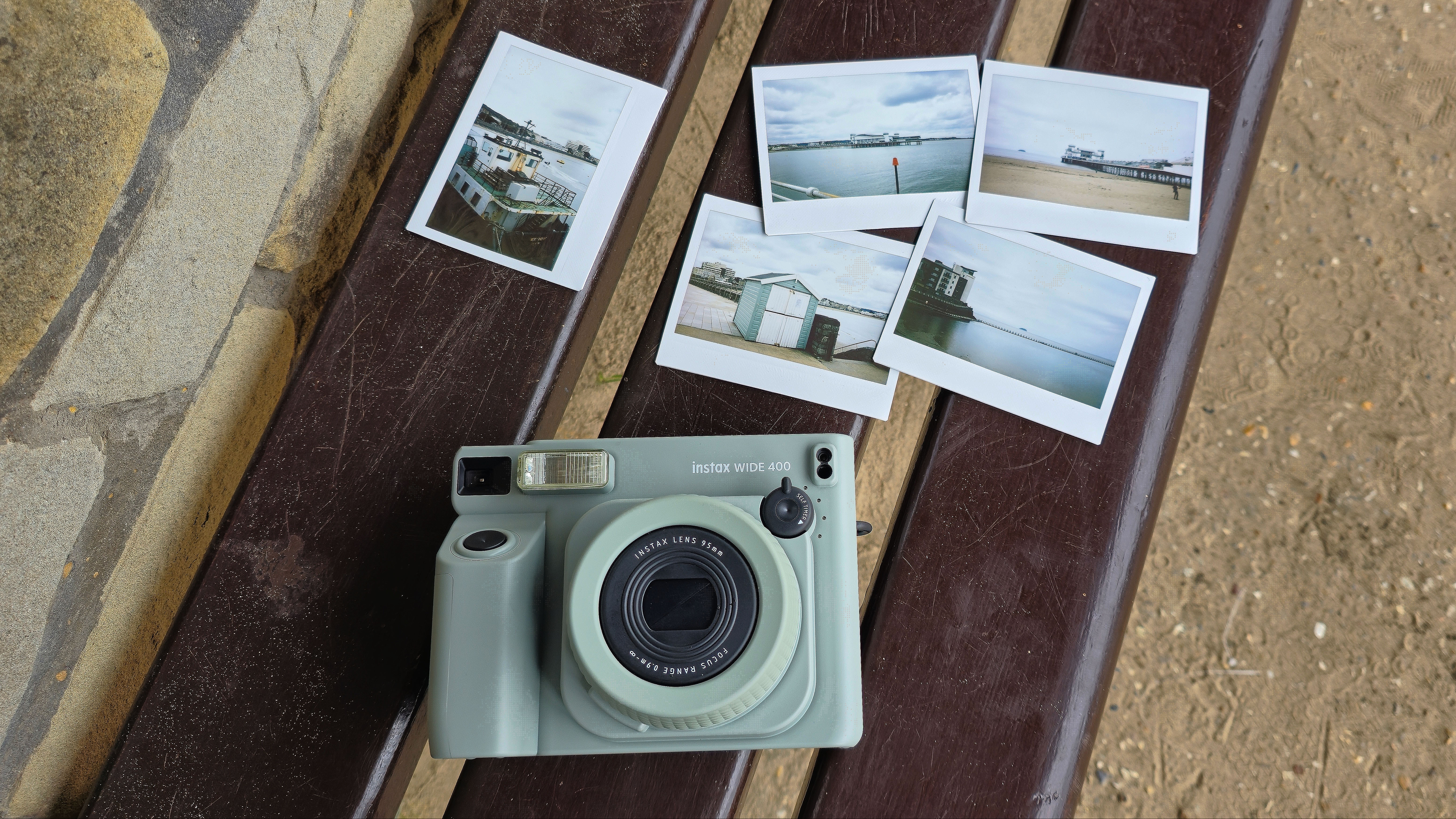
Fujifilm has been tipped to launch several mirrorless cameras in 2025, including the X-E5 and an intriguing medium-format compact called the GFX100RF. But if you're looking for a cheap sidekick that's built for pure fun, then the rumored Instax Wide Evo could be the most exciting of the bunch.
According to Fuji Rumors, the Instax Wide Evo will launch "soon," and the formula sounds pretty simple. Take the Fujifilm Instax Mini Evo (a hybrid instant camera that blends digital and film snapping), cross it with a Fujifilm Instax Wide 400, and you've got a pretty good idea of what to expect.
Promisingly, the Fuji Rumors' sources claim this Instax Wide Evo will be "regarded as the best-looking Instax camera ever made." That's subjective, but I think the Instax Mini Evo is still the most stylish instant camera out there.
Yes, it's made out of plastic, but the leather-and-chrome, rangefinder-style design is the closest thing to an instant version of a Fujifilm X-Pro camera.
Right now, rumored specs are thin on the ground – we don't yet know if it'll inherit the Mini Evo's 35mm equivalent lens, automatic flash, self-timer, and other features. But one added detail in the rumors is that there'll be a "film rewind knob" on the body, which you'll turn when you want to print your photos.
That all sounds very fun, but it's the overall concept of a stylish, versatile Instax Wide camera that I'm looking forward to...
Why I want the Instax Wide Evo

Instax film comes in three sizes (Mini, Square, and Wide), and I've always preferred the Wide format because it's the closest thing to a real photo rather than a little souvenir sticker. Wide is basically the size of two Mini prints with a photo size of 8.6 x 10.8cm (or 3.4in x 4.2in).
The problem is that Fujifilm only has one Wide camera – and as our Instax Wide 400 review shows, it's not the most fully-featured or handsome of things. An Instax Wide Evo could fix these issues nicely while solving one of the main drawbacks of the Wide format – mounting film costs.
The benefit of a 'hybrid' instant camera like the Evo series is that, because the images are captured digitally and then printed, you can choose which ones to print out – which is helpful when 20-shot packs cost $24.99 / £16.99 each. Sure, it isn't quite the pure experience of exposing film directly and waiting for it to develop, but it is much more practical, particularly if you're a parent.
I recommended the Fujifilm Instax Mini Evo to a friend who wanted an instant camera for their kid, and they love it. The experience is still fun and intuitive compared to simpler Instax models. And there's the added benefit of being able to connect the camera to other smartphones so that it can act as a Bluetooth printer at parties.

The cherry on top would be if the Instax Wide Evo could also print directly from my Fujifilm X-T5 camera, but that's not guaranteed. For some reason, Fujifilm has restricted direct printing to a few camera models, with the rest needing to use the smartphone app.
Still, that wouldn't be a deal-breaker and I'd almost certainly buy an Instax Wide Evo if it lives up to its rumored billing. And it seems we won't have to wait long to find out.







